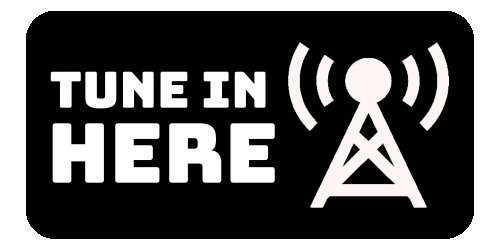
Is Adding Music to an Instagram Story a Mode of Tasteful Expression?
Written by: Annabelle Hershelman | May 20th, 2025
Cultivating a unique taste in music, distinct to what you like and akin to the tones and moods of your life, can be an enjoyable and even admirable avocation that can also act as an exclusive mode of expressing yourself. Tastes can be often reduced to groups of people commonly listening to certain circles of artists and genres, with an example being of if you listen to Clairo, you may likely have heard of or listen to Adrianne Lenker, Kimya Dawson, bôa, and Kitty Craft, and enjoy soft and similarly sweet songs in the springtime, but despite resemblances in your taste to the tastes of others, it can remain unmistakably your own. What you like or do not like is, of course, still based on your subjective ideas of what sounds good in the music you hear.
We tend to hold dear to our hearts the artists, songs, and albums we enjoy, and that is why the phenomenon of clipped songs experiencing a process of TikTokification often leaves a sour taste in our mouths. This frustration, however, is a reassuring notion in this time when the general quality of media seems to be decreasing as the number of videos being uploaded needs to meet the demand of our infinite scrolling and short attention spans. The fact that people still value having a refined music palette and do not want to see their favorite songs being reduced to a repeating fifteen-second soundbite optimistically displays a continuation of the sentiment that our tastes are valuable, and it can express who we are to other people based on its niche nature and specificity to us.
This TikTokification of music promotes an optimally reduced version of the song structure to its most clippable and repetitive form, with the catchiest possible hooks, and is changing the music industry irrevocably for the worse. However, this general feature of only a particularly ideal section of a song being cropped to the length of a video or a post has been used as an exciting new method of expression and is something we use on Instagram, especially.
The platform introduced the ability for users to add music to initially just their Instagram stories on June 28th, 2018, promoting the feature by stating that now you can “add a soundtrack to your story that fits any moment”. TikTok was still Musical.ly at this point, and Instagram was likely following in the former platform’s footsteps. I mention this to give proper credit to the development of this idea to Musical.ly, Vine, YouTube, and prior platforms that had the feature in their arsenals before Instagram, to not give kudos to Mark Zuckerberg and Meta where it is not due. If you are a member of the generation who grew up making Minecraft YouTube video timelapses with sped-up music in the background or spent time lip-syncing to “Roses” by the Chainsmokers and ROZES in the sixth grade on Triller, this concept of adding music to online posts and videos is not new.
Instagram, though, has become the preferred platform to express oneself and curate the energy of one’s life. In the fast-moving social media cycles of our clung-to iPhones, Facebook already feels like it’s from a former era that the Millennial generation belongs to, and one can tend to feel a bit too old to use Snapchat once graduating from high school. For Generation Z, photo-sharing takes place on Instagram, and self-expression finds a space on this platform where pages do not only have to consist of slides of family pictures and milestone events.
Unquestionably, Tumblr and Pinterest are also territories allowing users to engage in curation, and I would be amiss to position Instagram as the only place to post an esoteric picture featuring a lit cigarette with a pair of Doc Marten’s in the foreground set to a caption featuring lyrics to “Robbers” by The 1975, because that would be firstly Tumblr’s forte. But if you are going to bravely approach a crush you have in class to get their contact, you are either going to ask them for their Instagram or their phone number. When they additionally get yours, you are going to want them to see this slice of yourself on your page that you created in the large amount of time, if comparing you to the average user, you spent on the platform. This is where your personal taste in music and photo layout comes into play, when you inevitably end up curating a representation of yourself for others to see.
While the commodification of clips of music seems to be destroying the popularity of songs that you must be patient with, that may reveal their hooks after minutes of listening, and it is ideal to the ever-oppressive capitalistic apparatuses that our attention spans could never suffer listening to a song like “The Diamond Sea” by Sonic Youth, our interest in showing others our treasured tastes defies the interests of these forces. We want to be seen as who we are, and even the versions of ourselves we aspire to be, and if you are a person who has their heart set on a twee style reminiscent of mod fashion beginning in the 1960s and then revived in the late aughts, pinning photos of Zooey Deschanel and thrifting blouses with Peter Pan collars is going to be your métier and when you post that Polaroid film photo of yourself, including a Camera Obscura song to soundtrack it is going to be the cherry on top for this social display. The feature of putting a song to a post is another mode to allow us to be able to create an atmosphere around us and the art we create, or our photography, etc.
I have mentioned how this feature has existed on many platforms throughout Generation Z’s time on this earth, perhaps established in the cultural zeitgeist beginning when Myspace allowed users to be able to select an Alkaline Trio song to automatically play when someone visited their profile page. Yet, this general concept can be compared to a classic hallmark of fiction films, the non-diegetic music moment.
A needle-drop scene in the movies set to any range of intense, heartwarming, bittersweet, or optimistic emotions being felt through the expression on the character’s face is sharpened and amplified to the audience by the choice of song or score soundtracking the sequence. The versatility of scores arranged by Trent Reznor and Atticus Ross on wildly different films like The Social Network and Challengers thematically tie in the moods of each features with a pulsing center, and to describe a specific needle-drop scene that was able to miraculously revive and make anew a hugely popular song and attach it to the air of the film, was the inclusion of “Complicated” by Avril Lavigne in the 2023 film Bottoms directed by Emma Seligman. Ayo Edibiri and Rachel Sennott’s characters are down on their luck, and in the aftermath of a tension-filled fight between the duo, their downtrodden attitudes are encapsulated by a montage sequence featuring the 2002 hit.
It can be difficult to describe the visibility or quality of being “seen” you can experience when you just get the feeling of the character within the film you are watching, and the resonance you can feel to their bittersweet mood. An endlessly meaningful scene I have always connected to takes place in the enduring 2017 feature Lady Bird, where Christine “Lady Bird” McPherson is delivering a monologue to her mother, reminiscing about her experience driving around Sacramento for the first time before leaving for college, taking in her hometown for the last time. The brilliant score by Jon Brion expresses in a musical mode the aching nostalgia of her memory, and through this translation of feeling, the viewer can find their eyes are stinging from the cinematic moment, permitting them to feasibly recollect their time of change, of leaving their childhood home to attend college.
The score selection does not just serve to accompany the poignant moment but is also a part of the larger arc of Christine’s growth. She is another entry in a canon of offbeat characters, as she is often in conflict with her mother and others because of her idiosyncrasies, but she can be likable in the way she is truly just trying to live in her own world and is gathering these resounding senior-in-high-school experiences. She can be partly characterized by the music she is put to and her strange love with her best friend Julie of the odd hit “Crash into Me” by Dave Matthews Band. Our music encapsulates us, and the method in which it does so is equidistant to our representations of ourselves on social media and how a film character’s essence is captured in the music put behind them.
Despite the annoyances of how songs are cut down to their most commodified snippet on TikTok, how we measure out what fragment of a song we want to put to a picture of us on our Instagram stories is also this tool of encapsulating expression that tells people exactly what kind of air we hold ourselves to and what our particular tastes are. If I select a deep cut song from a beloved emo album, the people who also care about that record and are paying attention might be able to see the tastes we have in common, and what my articulated taste is, earnestly.
While we are infuriated by the TikTokification of our favorite songs, this exasperation shows we still hold our tastes dear to us as another facet of who we are, and the way we soundtrack our photos and visual capsules of ourselves to handpicked songs is just like how a music moment can translate the frame of mind, feelings and heart of a cinematic character for the audience to relate to and understand.

